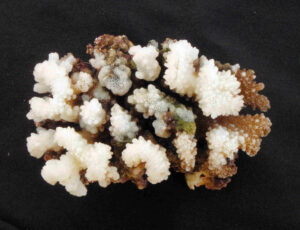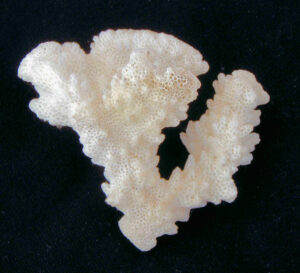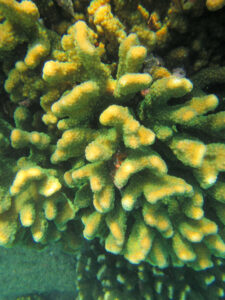Cauliflower Coral, Pocillopora elegans

 Cauliflower Coral, Pocillopora elegans. Coral collected from a greater Los Cabos tidal pool, Baja California Sur, January 2010. First photograph is of an in vivo colony that range in size from 1 m (3 feet 3 inches) square by 15 cm (5.9 inches) deep. The second photograph is of one colony that is 6.0 cm (2.5 inches) x 6.0 cm (2.5 inches) x 4.0 cm (1.5 inches).
Cauliflower Coral, Pocillopora elegans. Coral collected from a greater Los Cabos tidal pool, Baja California Sur, January 2010. First photograph is of an in vivo colony that range in size from 1 m (3 feet 3 inches) square by 15 cm (5.9 inches) deep. The second photograph is of one colony that is 6.0 cm (2.5 inches) x 6.0 cm (2.5 inches) x 4.0 cm (1.5 inches).

 Cauliflower Coral, Pocillopora elegans. Underwater photographs taken in coastal waters of the greater Los Cabos area, Baja California Sur, May 2018. Photographs courtesy of Bob Hillis, Ivins, Utah.
Cauliflower Coral, Pocillopora elegans. Underwater photographs taken in coastal waters of the greater Los Cabos area, Baja California Sur, May 2018. Photographs courtesy of Bob Hillis, Ivins, Utah.
Phylogeny: The Cauliflower Coral, Pocillopora elegans, is a member of the Pocilloporidae Coral Family which is the second most important coral contributor to global reef formation. It is also known as the Elegant Coral. In Mexico it is known as colifor coral. The family has five genera.
Morphology: The branching of the Cauliflower Coral produces large, bush-like coral heads which can range in color from pale to dark brown to green. They have verrucae (fuzzy wart-like projections) that are uniform, rounded and smooth and small polyps that are embedded in the stony skeleton. They are typically 0.6 (2.0 feet) to 1 m (3.5 feet) tall, growing at rates of 2.5 cm (1.0 inch) to 5 cm (2.0 inches) per year.
Habitat & Distribution: The Cauliflower Coral thrive in shallow reef environments with good tidal flows. The Cauliflower Coral is found in all coastal Mexican waters of the Pacific with the exception that they are absent from along the west coast of Baja north of Todos Santos.
Life Cycle: The Cauliflower Coral reproduces sexually year round via plannulae larvae and asexually via fragmentation. They tend to spawn each month within a couple of days surrounding a new moon. They have life spans of seven or eight years.
Threats: This Cauliflower Coral is adversely affected by overfishing of sea urchin predators. All corals are estimated to dissolve at carbon dioxide levels of 560 parts per million, making corals among the species most threatened by global warming. Alarming is that coral reefs provide habitat for one quarter to one third of all marine life. As water temperatures increase, coral lose the algae in their tissues in a process known as bleaching. Mass bleaching events lead to disease and death of the reefs.
Human Impact: Pocilloporids have a wide application in the aquarium trade due their easy propagation and adaptable nature
Common Confusion: The Cauliflower Coral is most likely confused with Pocillopora verrucosa (also named Cauliflower Coral) which has more blunt, bump-like branches.